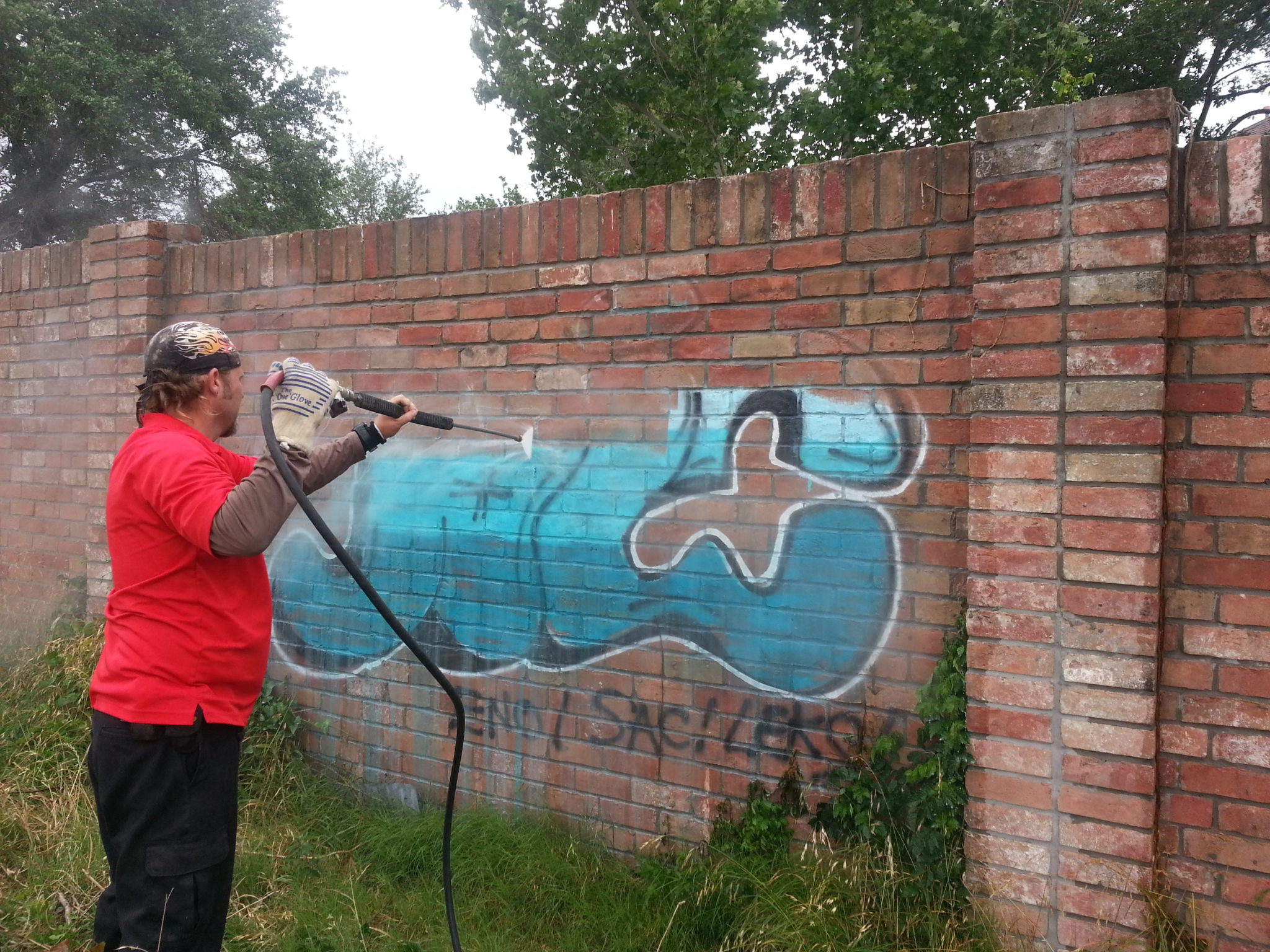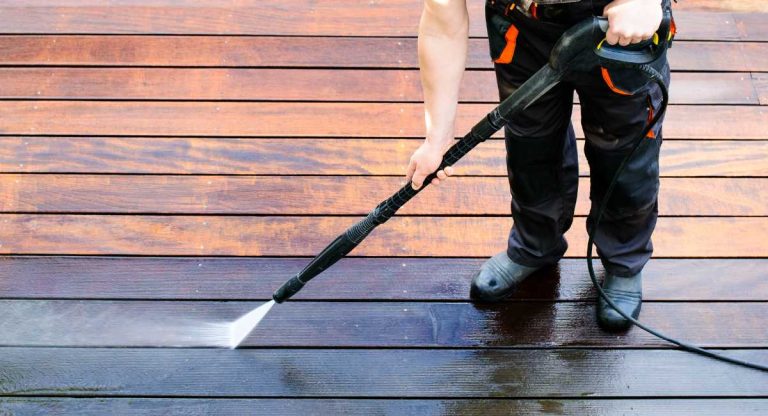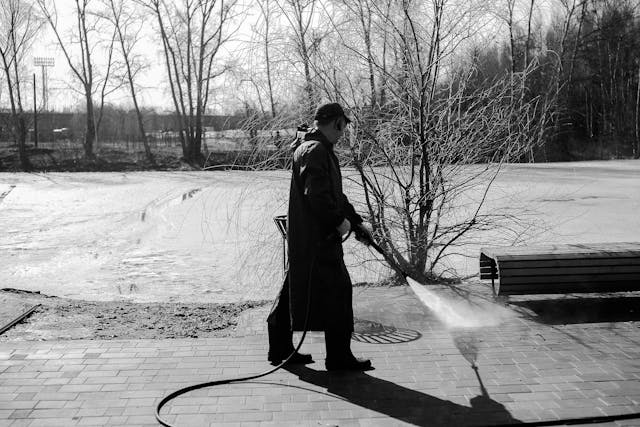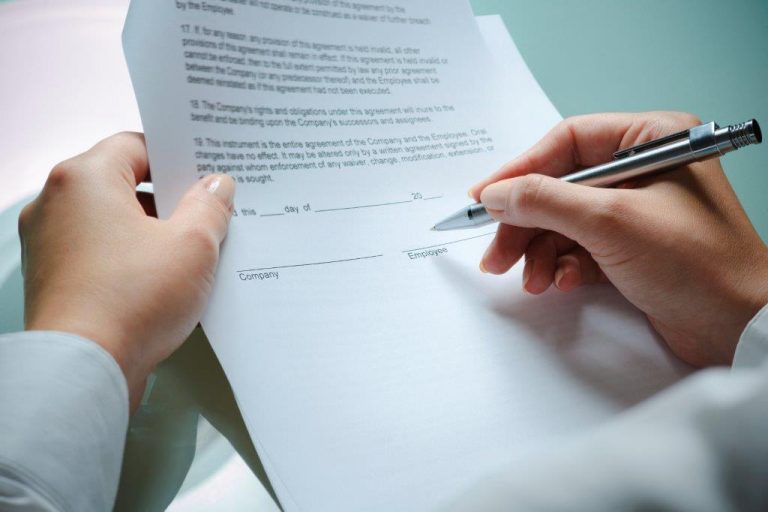
Graffiti might be art in some settings, but when it shows up uninvited on your home, business, or community property, it becomes a serious problem. From spray paint tags on fences to colorful murals on storefronts, graffiti can lower property value, hurt curb appeal, and invite more vandalism. 😠🚫
Luckily, professional power washing is one of the most effective ways to remove graffiti — but it’s not as simple as blasting it with water. Hiring the right power washing service ensures that the graffiti comes off cleanly, safely, and without damaging the surface underneath. Let’s explore everything you need to know before making that call. 📞🧼
🎯 Why Power Washing Is Ideal for Graffiti Removal
Power washing uses high-pressure water (sometimes with cleaning agents) to break down paint, ink, and stains. It’s especially useful on:
- Concrete walls
- Brick facades
- Metal doors and gates
- Wood fences
- Sidewalks and retaining walls
Compared to scraping or painting over graffiti, power washing is faster, cleaner, and more cost-effective — especially when done professionally. 💪💦
⚠️ Not All Surfaces Can Handle High Pressure
Here’s where it gets tricky: not every graffiti-covered surface is strong enough for high PSI (pounds per square inch) cleaning. In fact, using the wrong settings can:
- Etch or chip concrete
- Strip protective coatings from metal
- Damage wood grain
- Leave behind ghost shadows of the graffiti
This is why it’s critical to hire a power washing company that understands how to adjust pressure, temperature, and chemicals based on the surface material. 🔍
🔍 What to Look for in a Graffiti Removal Pro
When hiring a power washer for graffiti removal, make sure they:
✅ Have experience with graffiti-specific jobs
✅ Know how to treat different materials (brick, wood, metal, etc.)
✅ Use environmentally safe, surface-appropriate cleaners
✅ Offer same-day or next-day service for urgent cases
✅ Can provide before-and-after photos or references
Ask specifically:
“How many graffiti jobs have you done?”
“What’s your approach to graffiti on rough surfaces like stucco or brick?”
A seasoned pro will explain the method — not just “we’ll blast it off.” 💬🧠
🧪 Do They Use the Right Cleaners?
Plain water usually won’t cut it. Professionals often use a combination of:
- Biodegradable graffiti removers
- Paint strippers or solvents
- Degreasers
- Heat-boosted water for tough jobs
These solutions help break down paint so it can be rinsed off without scrubbing or gouging the surface. 🌿🧴
The right cleaner depends on both the surface and the type of paint or ink used — which is why DIY approaches often fail or cause more damage.
Browse Amazon Here For Biodegradable Pressure Washing Detergents
📍 Location Matters
Graffiti in hard-to-reach places (like second stories or rooftops) requires special equipment like:
- Extension wands
- Scaffolding or lifts
- Telescopic nozzles
- Rinse recovery systems (to control runoff)
Be sure the company you hire is licensed, insured, and properly equipped to handle elevated or narrow-access work. 🧗♂️
💧 Environmental Considerations
Many cities and municipalities have rules about water runoff and chemical use — especially near storm drains. A reputable contractor should:
- Use environmentally friendly products
- Recover or divert wastewater
- Avoid overspray on cars, landscaping, or neighboring property
If they say “don’t worry about it,” you should probably worry. 😅🌎
📸 Document the Damage
Before hiring a service, take clear photos of the graffiti — especially if you’re:
- Filing a police report
- Submitting a claim to insurance
- Requesting reimbursement from a city or HOA fund
After the job, get photos from the contractor showing the cleaned surface. This helps with documentation and also protects you from repeat incidents. 📷✅
⏱️ The Sooner, the Better
Graffiti is easier to remove when it’s fresh. Over time, paint:
- Soaks into porous surfaces
- Hardens under sunlight
- Becomes more resistant to chemicals
That’s why many power washing companies offer emergency or rapid-response graffiti removal. The faster you act, the better the results — and the less likely taggers are to come back. 🚀
💬 Ask About Anti-Graffiti Coatings
Some companies also offer anti-graffiti sealants — clear coatings applied after cleaning that make it easier to remove future graffiti. These are great for:
- Brick walls
- Commercial signage
- Storefronts in high-traffic areas
- Public spaces or HOA property
They don’t prevent graffiti but make cleanup much easier the next time around. Think of it like a shield for your walls. 🛡️🧱
💵 How Much Does It Cost?
Graffiti removal pricing depends on:
- Size of the affected area
- Type of surface
- Accessibility
- Urgency (same-day service may cost more)
On average:
- Small tags (1–5 sq ft): $100–$250
- Medium areas (5–20 sq ft): $250–$600
- Large walls or multiple spots: $600+
Always request a quote in writing, and confirm whether it includes surface protection or follow-up visits. 📄💲
🏁 Final Thoughts
Graffiti removal doesn’t have to be a nightmare — not when you hire a qualified power washing pro. With the right experience, tools, and cleaning agents, a good contractor can restore your property’s appearance quickly and safely. 🧼🎨
Just remember:
- Ask the right questions
- Review their process and products
- Act fast before the paint sets
- Consider anti-graffiti coatings for the future
Don’t let vandalism win. Reclaim your space with confidence — and a little high-pressure cleaning power. 💪🏙️
Browse Amazon Here For Top Rated Power Washers And Accessories






